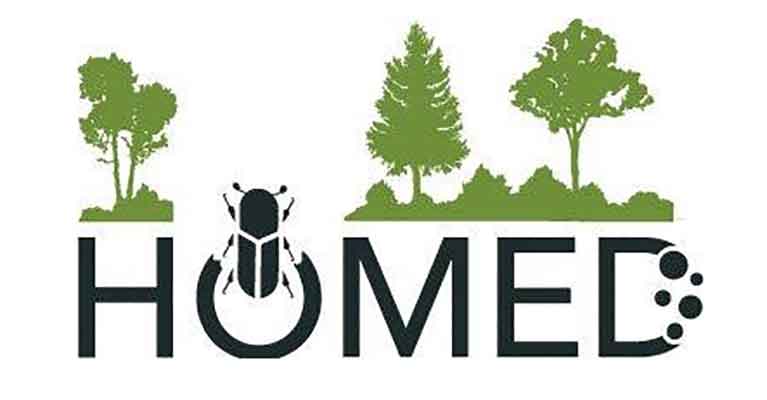
HOMED – Holistic Management of Emerging Forest Pests and Diseases
Funder
HORIZON 2020
This project has received funding from the European Union’s Horizon 2020 research and innovation programme under grant agreement no. 771271

Value
€4,999,296.25 (Value to CAWR: €135,937.50)
Collaborators
Institut National de la Recherche Agronomique; Alliance Forêt Bois; CAB International; Institute of Zoology; Chinese Academy of Science; Commonwealth Scientific and Industrial Research Organisation; Consiglio Nazionale Delle Ricerche; Swiss Federal Institute for Forest, Snow and Landscape Research; European Forest Institute; INRA Transfert; Instituto Superior de Agronomia; Mendelova Univerzita v Brne; New Zealand Forest Research Institute Limited; Pensoft Publishers Ltd; Royal Horticultural Society; Sveaskog AB, Sveriges Lantbruksuniversitet; Telespazio; The University of Queensland; United States Forest Service; Università degli Studi di Padova; University of Pretoria; Wageningen University.
Team
Katharina Dehnen Schmutz and Samantha Green
Duration
October 2018 – September 2022
Website
CAWR Research Themes:
Resilient Food and Water Systems in Practice

Sustainable Development Goals
GOAL 3: Good Health and Well-being
GOAL 11: Sustainable Cities and Communities
GOAL 12: Responsible Consumption and Production
GOAL 13: Climate Action
GOAL 15: Life on Land

Project Objectives
Forests are the highest ranked land cover type in Europe. They provide numerous goods and services of benefit to people. In the last decades, a growing list of introduced non-native pests and pathogens have been causing dramatic losses to European trees and forests.
Adopting a holistic and multi-actor approach, HOMED aims to develop a full panel of scientific knowledge and practical solutions for the management of emerging native and non-native pests and pathogens threatening European forests.
At a scientific level:
- Improve the understanding drivers for forest pest and predator emergence or invasion;
- Provide quantitative and spatialized predictions on pest and pathogen introduction, establishment and spread;
- Develop a generic framework for economic assessment of pest and pathogen risk mitigation options;
- Enhance knowledge on natural regulation of invasive tree or forest pests and pathogens;
- Identify best options for eradication, containment and control of emerging or invasive pests and pathogens.
At a technological level:
- Identify genetic markers for any new threatening pest and pathogen species;
- Perform ground detection and surveillance;
- Analyse images of pest and pathogen symptoms on trees sent by professionals and citizens;
- Monitor pest and pathogen affected areas;
- Develop integrated pest and pathogen eradication strategies;
- Design advanced classical and conservation biological control methods;
- Control pests and pathogens at an individual tree level.
At a risk management level:
- Contribute to the prevention, detection, diagnosis, eradication or control of new pests and pathogens;
- Aid for forest stakeholders to make the most appropriate response during the pest invasion and emergence processes;
- Help choose the best options for the eradication, containment or control of emerging and invasive pests and pathogens.
Impact
The expected impacts contribute towards:
“Knowledge and solutions for understanding drivers for forest pest and disease emergence”
“Development of reliable tools for the prevention, detection and diagnosis, of forest plant pests and diseases”
“Reduction of economic losses by the forestry sector”
“Improved food quality and food safety”
“Implementation of EU plant and animal health policies”
“In the longer term, project outputs will help the forestry sector to remain productive and contribute to food security”
“New market opportunities, strengthening competitiveness and growth of new companies.”
“Addressing climate change, environmental and societally important issues.”
Latest Updates
The HOMED surveys about new, emerging tree pests and diseases: awareness, detection and management which were available this to stakeholders interested in tree health in Europe is now closed. There were 240 responses via surveys in 9 languages from people interested in European tree health from all over the world, particularly in Europe. The project team would like to thank all those involved, those who took the survey and put their views across, and those who distributed the surveys to their networks. Please find the latest Stakeholder Survey Results.
For more information on this project, please contact Katharina Dehnen-Schmutz




